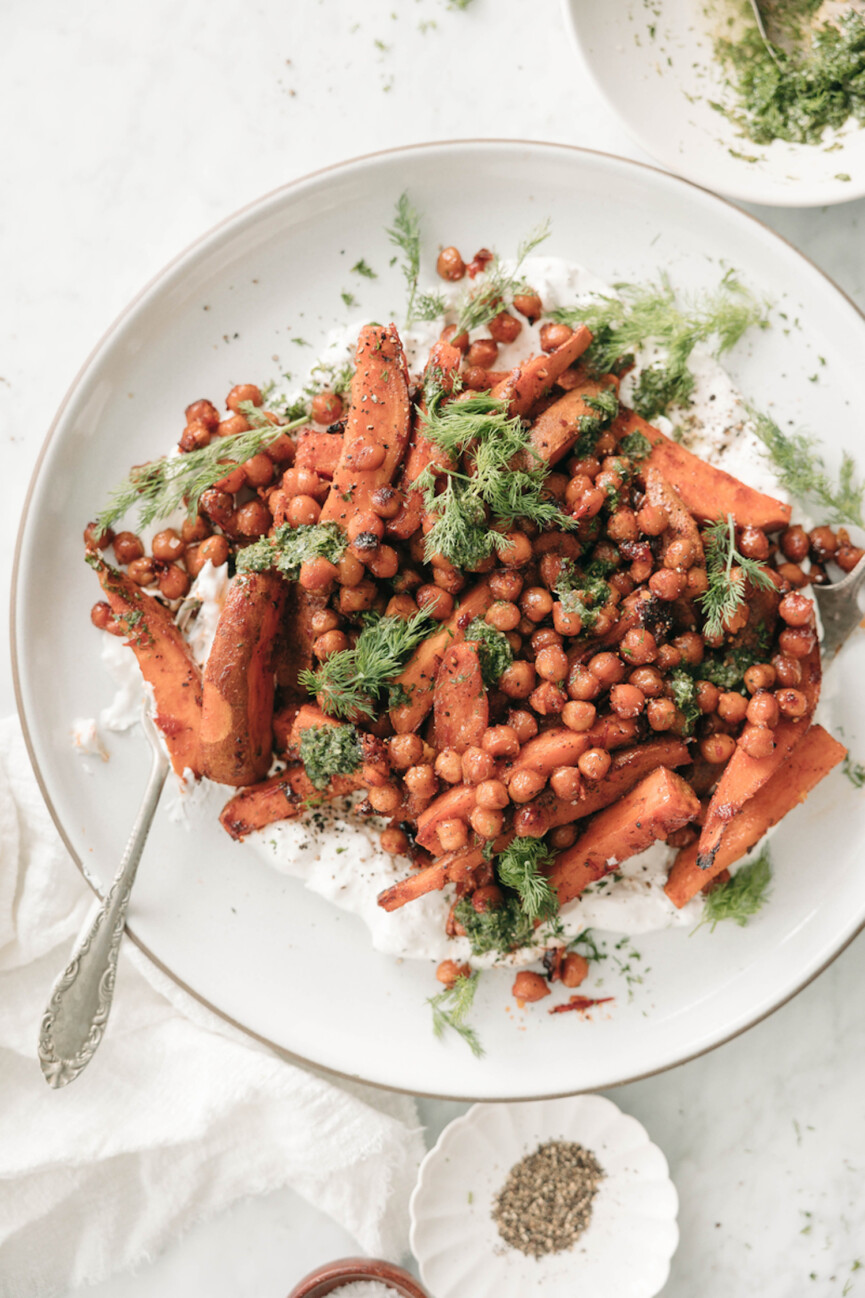Increased libido. Heightened energy. Amplified vitality. Enhanced mood. Improved focus. The list goes on! Welcome to your ovulatory phase. If ovulation doesn’t ring a bell, don’t fret. Most menstruating women aren’t familiar with it. For more reasons than one, this cycle phase remains a mystery—an often overlooked topic (and experience). With that in mind, we’re here to empower. Consider this comprehensive guide your 411 on the ovulatory phase: when it is, why it’s important, signs you’re ovulating, and so much more. Regardless of your reproductive goals, healthy ovulation matters.

A Menstrual Cycle Recap
Whether you live in tandem with your cycle, dread your period, or are unfamiliar with your flow, grab a notepad. Every cisgender woman should—in the very least—understand menstrual cycle basics. At its core, the menstrual cycle is a complex, rhythmic process. It involves a series of hormonal changes and physiological events that prepare the body for conception. The cycle typically lasts around 28 days (but variations are common). The follicular phase kicks things off, the luteal phase closes the loop, and ovulation is smack dab in the middle.
Follicular Phase
The follicular phase begins when bleeding starts. This is the first day of menstruation. This stage lasts until ovulation. During this phase—about 14-18 days—follicles grow in the ovaries, each containing an egg. Estrogen increases in preparation for a potential pregnancy.
Luteal Phase
The luteal phase follows ovulation and lasts until the start of your next menstrual period. After ovulation, progesterone rises. If pregnancy is in the cards, progesterone stays elevated. If not, it sharply drops and bleeding begins again.

When is the ovulatory phase?
It’s approximately halfway through the menstrual cycle—around days 12-16 (of a 28-day cycle). Some women can ovulate as early as day seven, and others can ovulate as late as day 21. This totally depends on the length of her overall cycle! During this phase, one ovary releases a mature egg, marking peak fertility. If you’re trying to conceive, ovulation is a critical window for sperm to fertilize the released egg.
Why does the ovulatory phase get overlooked?
For starters, menstruation gets the spotlight. It’s the most visible (and often, achey) part of the cycle. On the flip side, ovulation is subtle in nature. There aren’t significant outward shifts—unless you’re keenly tracking your body’s changes. Last but not least, it’s sandwiched between the start and finish of the menstrual cycle. As such, the ovulatory phase is easily overlooked. But spoiler alert: ovulation is far more than a precursor to conception.

What happens if you don’t ovulate?
You have an anovulatory cycle. This describes a menstrual cycle without ovulation (yes, this can happen!). Unfortunately, it has a cascade of short-term and long-term implications:
Short-Term Consequences
- Menstrual irregularities. Anovulation leads to missed periods or unpredictable bleeding patterns.
- Difficulty conceiving. Without ovulation, conception can’t occur (causing infertility or difficulty getting pregnant).
Long-Term Consequences
- Infertility. If left untreated, chronic anovulation can lead to long-term infertility.
- Polycystic ovary syndrome. Anovulation is a hallmark feature of PCOS, a hormonal disorder with long-term health complications.
- Hormonal imbalances. Over time, a lack of ovulation contributes to persistent hormonal imbalances, leading to symptoms like irregular periods, acne, hirsutism (excess hair growth), and mood disturbances.
- Bone health issues. Estrogen plays a crucial role in maintaining bone density. Prolonged anovulation (and low estrogen levels) can increase the risk of osteoporosis and bone fractures.
- Increased risk of endometrial hyperplasia and cancer. Without the uterine lining shedding regularly, the endometrium (lining of the uterus) becomes thickened, increasing the risk of endometrial hyperplasia and, in some cases, endometrial cancer.

How long does ovulation last?
Ovulation generally lasts for about 12-24 hours. However, the fertile window, which includes the days leading up to—and immediately following ovulation—can last for upwards of six days. This is because sperm can survive in the female reproductive tract for several days, waiting for the egg to be released.
How to Know if You’re Ovulating
There are a few telltale signs you’re ovulating. As mentioned, tracking your body’s changes is a great way to do this. Otherwise, your healthcare provider can confirm via a day-21 progesterone test. By measuring your progesterone levels when they’re expected to peak (seven or so days before your period), you’ll know if you’ve ovulated or not. Bloodwork aside, these are common symptoms:
Physical Characteristics
- Increased basal body temp. A rise in basal body temperature occurs due to the surge in progesterone following ovulation. Tracking basal body temperature can help pinpoint ovulation.
- Changes in cervical mucus. Cervical mucus becomes thin, clear, and slippery, resembling egg whites. This cervical fluid promotes sperm survival and facilitates fertilization.
- Heightened libido. You’ll likely experience an increase in sexual desire during the ovulatory phase, driven by hormonal changes that promote fertility.
- Ovulation pain. Some women may experience mild discomfort or pain in the lower abdomen, known as mittelschmerz, during ovulation. If you do, this is normal!
- Positive ovulation test. Ovulation predictor kits can detect the surge in luteinizing hormone (LH), indicating imminent ovulation.
Mental Characteristics
- Heightened energy and vitality. You may feel more energetic and vibrant during the ovulatory phase, attributed to hormonal shifts.
- Enhanced mood. This phase’s surge in estrogen positively impacts mood.
- Improved cognitive function. Some studies suggest that hormonal fluctuations during the ovulatory phase enhance cognitive abilities, such as memory and spatial awareness.

Supporting a Healthy Ovulatory Phase
Below are tried-and-true tips for nourishing this phase of your menstrual cycle.
Eat With Ovulation in Mind
As your period ends, focus on protein, choline, antioxidants, and omega-3 fatty acids. These nutrients play a role in supporting healthy follicles. And for general hormone health, don’t skimp on fiber-forward ingredients.
Amp up Your Workouts
Thanks to peak levels of estrogen, you’ve got energy to burn during ovulation. If there’s a time to push yourself, this is it! Take advantage of moderate-to-high-intensity workouts—HIIT classes, quicker paces, higher weights, etc.
Connect With Your People
Marked by increased energy and heightened mood, this phase is an excellent time for socializing, connecting, and networking. Schedule social events, parties, or outings with friends. Additionally, your body’s surge in estrogen may make it an ideal window to request that raise you’ve been too coy to ask for.
Get Quality Sleep
As always, sleep is crucial for hormonal regulation. Aim for 7-9 hours of quality sleep to support overall reproductive health.

Foods to Eat During Ovulation
When it comes to syncing with your cycle, the power of nutrition can’t be overstated. During your ovulatory phase, focus on the following:
- Leafy greens. Spinach, kale, Swiss chard, etc. They’re rich in folate, supporting ovulation and fertility.
- Fatty fish. Mackerel, sardines, salmon, and trout are excellent sources of omega-3 fatty acids, helping regulate hormones and reduce inflammation.
- Avocado. Avocados are rich in healthy fats, including monounsaturated fats and omega-3 fatty acids. We love noshing on this avocado toast with kale pesto during ovulation!
- Berries. All berries are packed with antioxidants, necessary for a healthy ovulatory phase.
- Eggs. Not only are high-quality eggs a convenient source of protein, but they contain essential nutrients—like choline and vitamin D—for fertility and hormone production.
- Legumes. Lentils, chickpeas, black beans, and other legumes are rich in protein, fiber, and iron. These are fabulous for blood sugar balance.
- Nuts and seeds. Almonds, walnuts, flaxseeds, chia seeds, and pumpkin seeds are rich in healthy fats, protein, and essential nutrients for ovulation and fertility.

I’m not trying to conceive—does ovulation matter?
Yes. Knowing when—and for how long—you ovulate is key for both achieving and avoiding pregnancy. Most importantly, irregularities in ovulation can be a sign of hormonal imbalances or underlying health issues. Think: polycystic ovary syndrome (PCOS) or thyroid disorders.
Myth or Fact, Ovulation Edition
To wrap things up, let’s put your knowledge to the test.
- Myth: Ovulation only matters if you’re trying to get pregnant. Reality: While ovulation is essential for conception, it also plays a crucial role in overall health, including hormonal balance, mood regulation, and bone health.
- Myth: Ovulation is always accompanied by noticeable symptoms. Reality: While some women experience physical signs—like changes in cervical mucus or mild pelvic discomfort—not everyone experiences overt symptoms of ovulation.
- Myth: Skipping ovulation occasionally won’t affect your menstrual cycle. Reality: Consistently skipping ovulation, due to hormonal imbalances or other factors, disrupts the menstrual cycle. This can easily lead to long-term health issues, including irregular periods and fertility problems.
- Myth: Hormonal birth control eliminates the need to ovulate. Reality: While hormonal birth control typically suppresses ovulation, it doesn’t negate the importance of ovulation for overall health.
- Myth: Ovulation is just a brief event in the menstrual cycle. Reality: Ovulation represents a critical phase in the menstrual cycle, marked by hormonal surges and physiological changes.
- Myth: Menstruation is the most significant aspect of the menstrual cycle. Reality: Each phase, including ovulation, contributes uniquely to women’s reproductive and overall health.
- Myth: Ovulation only matters to women who want to have children. Reality: Ovulation affects various aspects of women’s health beyond reproduction, including bone density, cardiovascular health, and cognitive function. Supporting ovulation is essential for overall well-being—regardless of pregnancy intentions.

